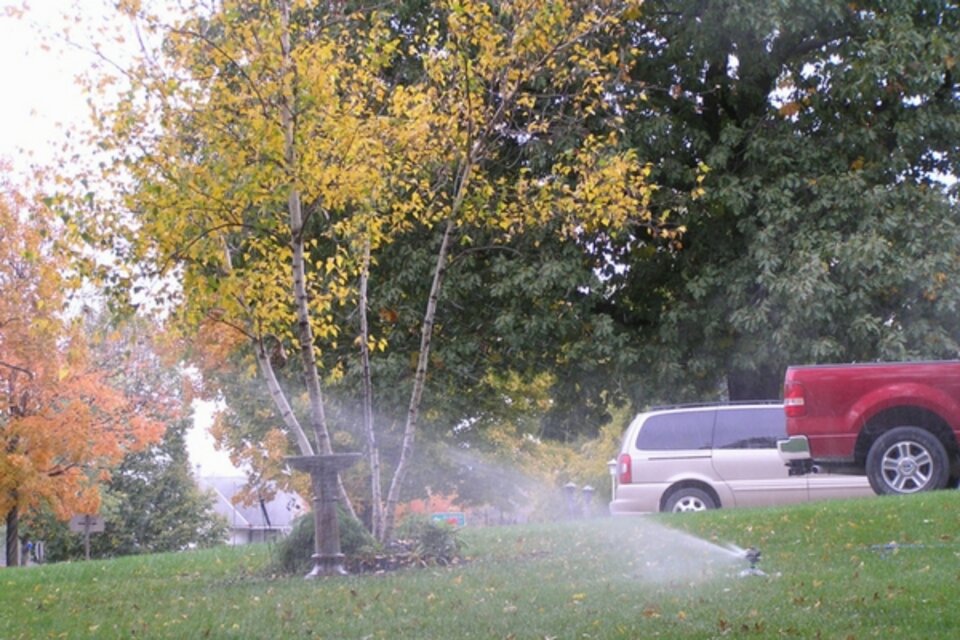Winter Watering

It’s hard to think about our plants in the winter months. It is even harder to realize that they are still alive and sometimes need care in the winter months. Once plants go dormant for the year many people believe that they need nothing until spring, but that isn’t always the case, especially in years with low or no snow or rain throughout the winter months.
Winter watering is essential in dry winter years. Winter desiccation commonly occurs on evergreen types of trees and shrubs. All trees are still transpiring, or losing water, throughout the winter months, evergreen trees are transpiring at a higher rate than deciduous trees. Winter desiccation occurs when the amount of water lost is greater than the amount of water the evergreen takes in throughout the winter months. The branches and needles of our trees will die. The damage from winter desiccation is brown needles out on the ends of branches. However, the damage from winter desiccation will not usually show up in our trees until early spring, so they will stay green through the winter. Drought effects can damage deciduous trees as well. Especially newly planted deciduous trees need to be watered throughout the winter months if natural moisture is absent.
Ensure adequate watering throughout the entire growing season for all trees and shrubs, especially those recently planted. Make sure that the tree is well watered going into the fall. Also, water throughout the winter when the ground is not frozen to help the trees through a dry winter, if necessary. Winter watering should occur during the day on days when the temperature is 40 degrees Fahrenheit or above and is only necessary 1-2 times per month until spring. It is a good idea to test for soil moisture with a long screwdriver or soil probe prior to watering to determine if watering is necessary. If the screwdriver goes into the soil easily up to 18 inches, watering is not necessary. However, if pushing the screwdriver into the soil becomes very difficult after the first couple of inches or less, watering would be necessary. After watering, apply a light layer of mulch over the roots of the tree, but not up against the trunk to avoid problems with voles.
Turf is another plant to take into consideration regarding winter watering. Winter desiccation can occur on turf when the soil is frozen, making water unavailable to plants. It is more problematic on sunny, dry, windy days when the air temperature is above freezing but the soil is dry or frozen, according to Bill Kreuser, UNL Turfgrass professor. Bill Kreuser states that, a little bit of drought stress prior to winter can actually help prepare the turf for winter conditions, it helps harden off the turf before any severe cold happens. It is actually better for the turf to have drought prior to winter rather than go into the winter with higher precipitation, as has been the case this year.
That being said, home lawns are more tolerant of winter desiccation stress because the Kentucky bluegrass, fescues, and buffalograss have a deeper root system and less overall stress than turf on the golf course. Established lawns may not need winter watering, but newly planted lawns may be more susceptible to winter desiccation. However, if we face a dry winter with little to no snow cover, irrigation may be needed at low amounts. Ensure that winter watering is not through an irrigation system or it will need to be cleared out again so the pipes don’t freeze and burst. It is best to hand water with a hose or bucket in the winter months.
This article was reviewed by John Fech